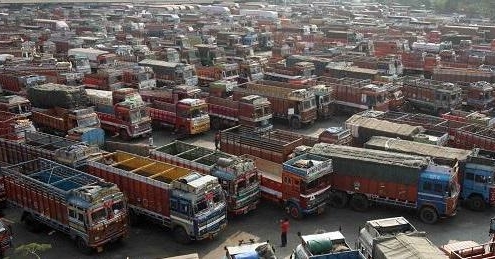Being digital is the solution to survive such logistic emergencies: LogisticsNow
April 7, 2020: LogisticsNow, the logistics intelligence platform, in its latest report recommended building digital supply chains using artificial intelligence and enabling digital payments as the solution to deal with emergencies such as Covid-19 pandemic.

April 7, 2020: LogisticsNow, the logistics intelligence platform, in its latest report recommended building digital supply chains using artificial intelligence and enabling digital payments as the solution to deal with emergencies such as Covid-19 pandemic.
The report titled: 'The Covid-19 War: How India can win faster leveraging its supply chains and logistics?' also shared insights on the current scenario of the logistics sector in India.
Build digital supply chains and logistics
India created the India stack for payments, resulting in the digital payments revolution unprecedented in our history. A similar digital logistics revolution based on the “logistics stack” is required in our supply chains and transportation to power our supply chains with intelligence, visibility and agility.
Mandate and further drive digital payments
The India stack was a great start and as a majority of payments become online, the data generated, in sync with CIS and Digital Supply Chains, will be a critical part to identify trends including spread of pandemics before they become evident and keep citizens safe.
Raj Saxena, founder and CEO, LogisticsNow said, “The logistics network nationally, from long haul to last mile, has been impacted and the lack of available logistics capacities and planning is likely to impact essential supplies and the common man, unless we act now.”
Additionally, the key recommendations to fight Covid-19 and also support the economy are:
Unlock Inventories for Retail Consumers
Inventories of essentials goods, already in transit, in warehouses or with distributors, has to be unlocked immediately. While it will take time for manufacturing and transport to get back on track from the initial disruption, local inventories available with distributors can be moved quickly to the retail network.
Build/ Re-build Transport Capacity
Transport capacities have been disrupted by stranded trucks and a lot of drivers were left without basic amenities. There is a need for thousands of trained drivers/ trucks to move essential supplies. Options including the Army Supply Corps (ASC), Indian Railways, CONCOR, Freight Marketplaces, and Freight Intelligence networks along with large fleet owners/ truckers who can provide transport capacity from long haul to the last mile, need to be aligned quickly.
Vaccine Distribution Capacity
World over, scientists are working at a furious pace to discover a vaccine for COVID -19. A plan needs to be in place to ensure when it is ready to be distributed to the mass communities, transporting it to the farthest districts can only be accomplished by planning in advance and executing rapidly. An unprecedented level of planning is of utmost importance and public-private partnership can create a rapid COVID-19 vaccination program to save lives.
The report sheds light on the logistics situation in India at the grassroots level, and how logistics and information technology can work in tandem to minimize the economic impact. Furthermore, the report highlights concerns raised by prominent industry leaders in the logistics and transport space:
• 50% + of India’s (organized long haul) trucking fleet is stranded without drivers
• Local (short haul) transport, though less impacted, is working with reduced capacities
• Trucks (including those carrying essentials) are still stuck for reasons including want of labour to load/ unload, check-posts etc.
• Railways is stepping up and can serve a few sectors, but the gap is large, with first mile and last mile being a challenge



